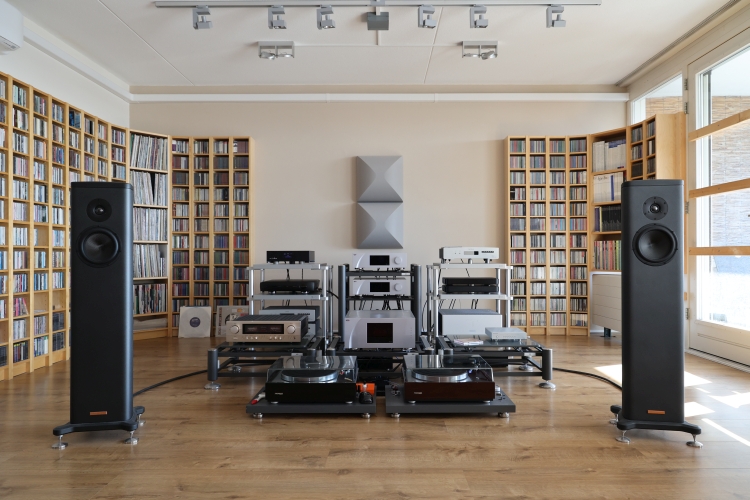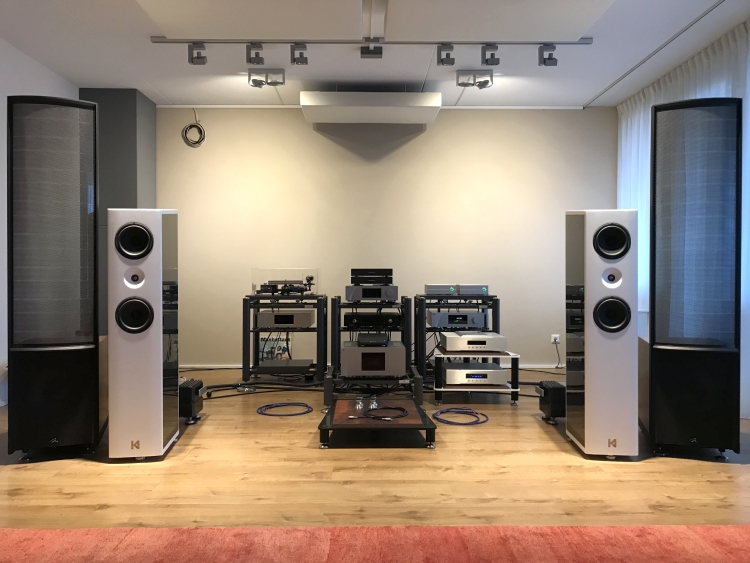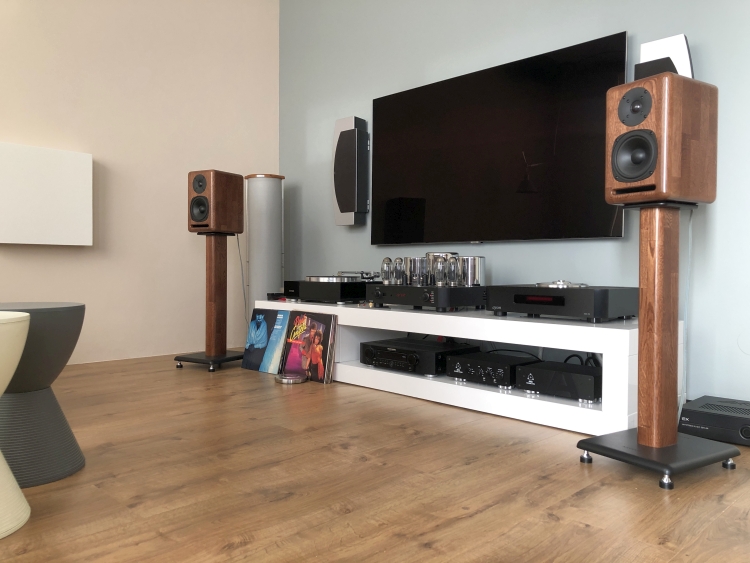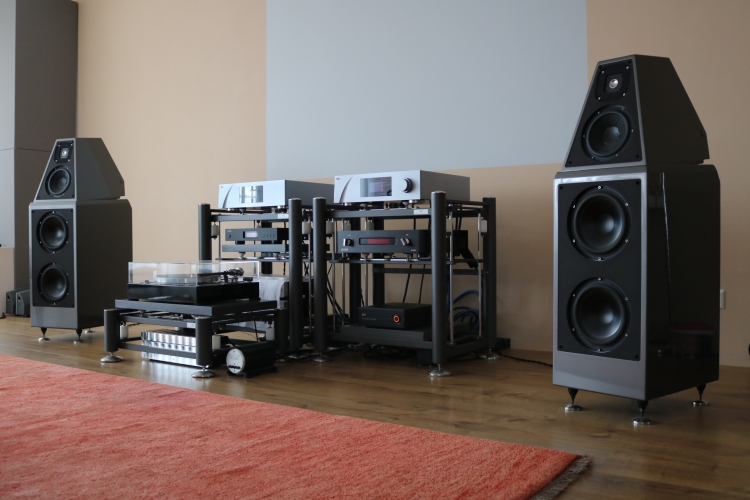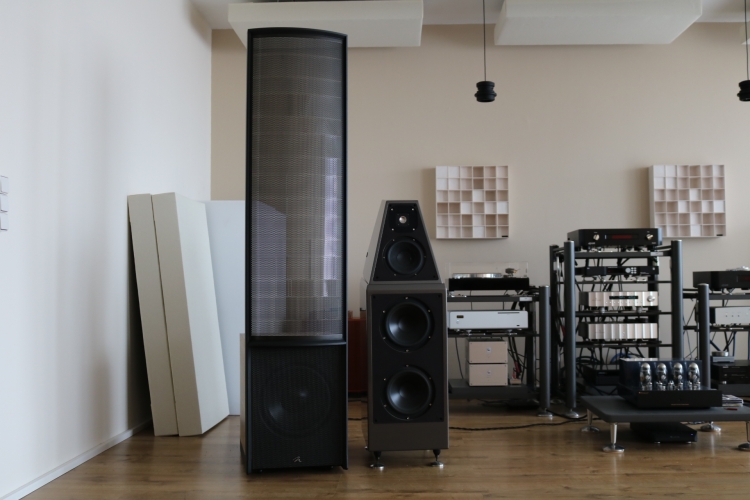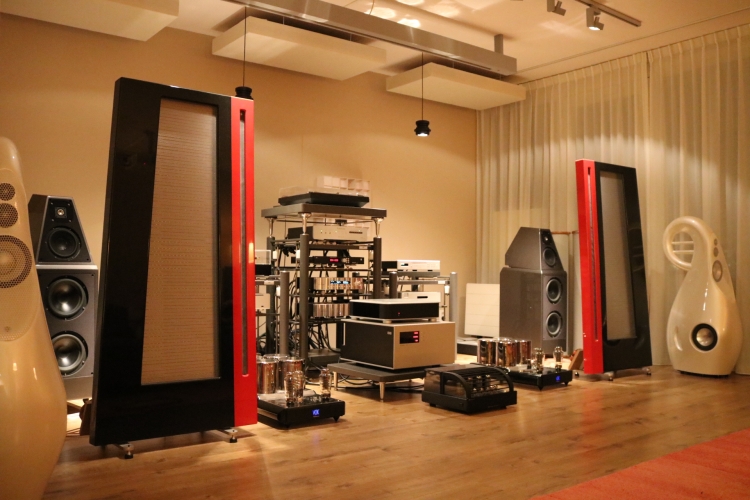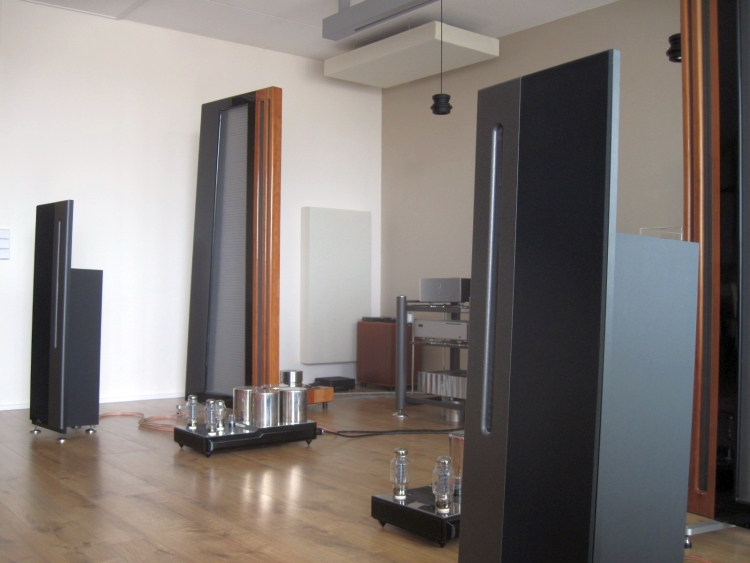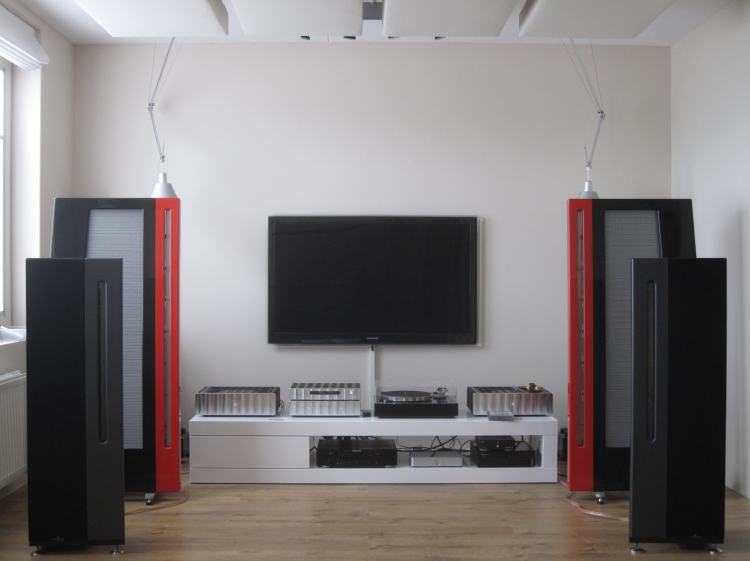HFA Audio Setup History 34 – Media Room v5 – May 2024
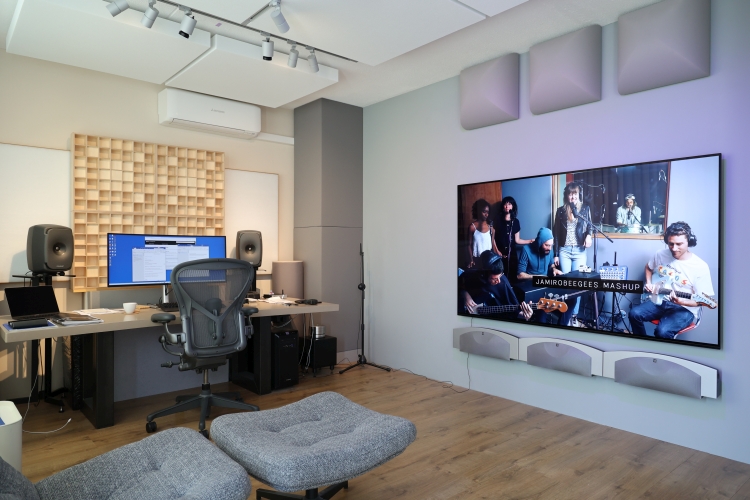
But soon thereafter, the penny dropped… Since the former kitchen wall had already been removed earlier, I could simply close the hallway and extend the available space on the long wall. Then, there would be more than enough space for the TV, and I could even move it to a central position.
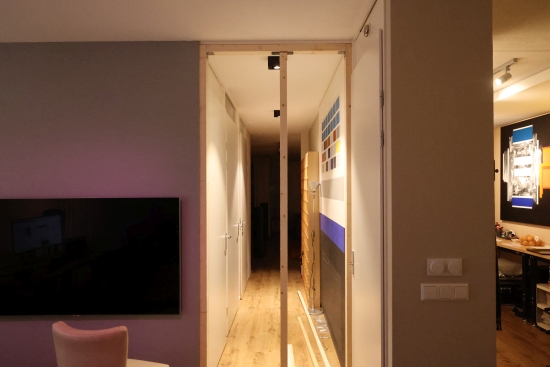
Closing the hallway was simple enough. All it took was a few lengths of wooden lumber and two gypsum boards, followed by, admittedly, quite a few layers of plastering and a paint job to obtain a passable result.
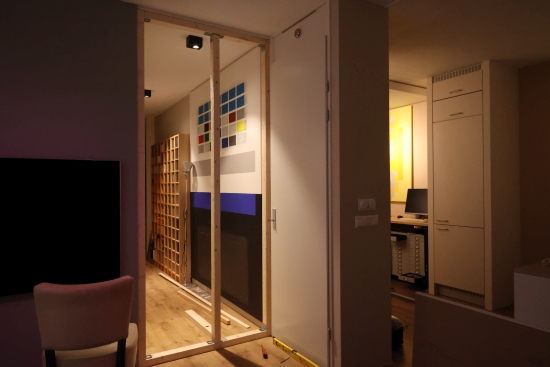
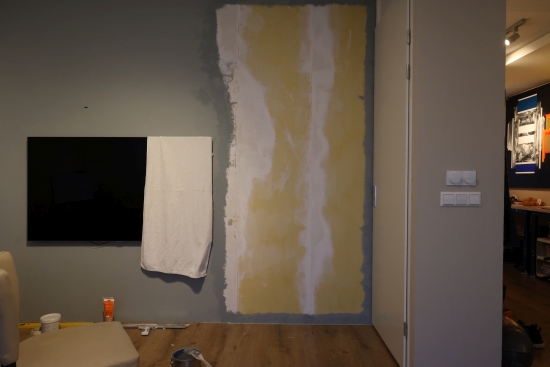
With so much more wall space, the old 65-inch Samsung QLED TV suddenly did not look all that large anymore. So, when I saw an opportunity for a heavily discounted 83-inch Sony OLED TV on Black Friday combined with a substantial cashback arrangement, I grabbed the chance to fulfill a longer-standing wish: to get a massive new screen with cleanly integrated speakers and nothing else on the wall.
So, my whole TV-lift cabinet adventure was not really needed after all. Oh well. They say practice makes perfect. In my case, I guess fixing the TV problem with the lift cabinet has freed up space in my mind to come up with a better solution eventually.
After mounting the new TV, I studied using JBL in-wall speakers and had everything figured out, including a huge in-wall subwoofer. However, this plan was put on hold because I ran into several acoustical issues. When I later found that three Martin Logan Fresco speakers would perfectly align with the new TV, I figured they were flat enough, and actual built-in speakers would not add much.
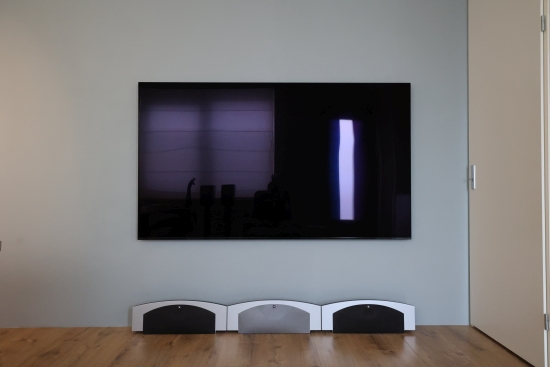
This is when the trouble started. Closing this section of the wall caused a massive bass build-up in the new corners on both sides of the wall, which introduced several standing waves that made certain frequencies sound out of phase. Moreover, the wall itself also introduced several issues that confounded one another, making it hard to find the core culprits. For instance, I would later find that the wall had its own resonance mode that would excite and emit an out-of-phase sound to mess with all three audio systems.
Building the new wall took less than two days, but addressing the resulting acoustical issues in all three systems incurred a massive learning curve and would take me over half a year!
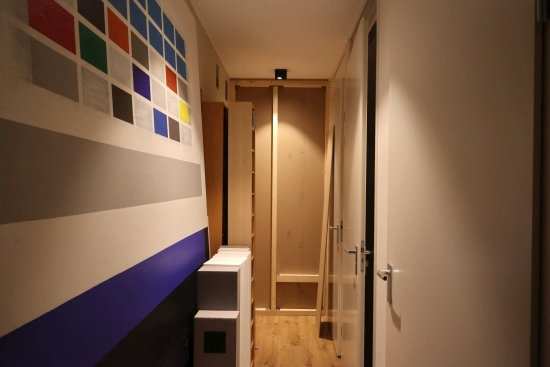
Above is the other side of the newly made wall, showing just the single layer of gypsum board; below is the same wall, completely filled with extra layers.
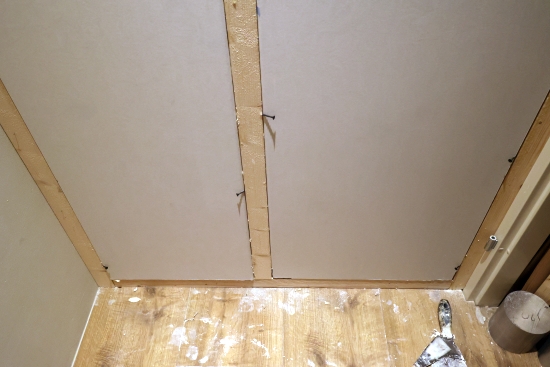
To combat the aforementioned resonances, I stiffened the new wall section using nine layers of gypsum boards affixed between the lumber and fixed to the back of the outer gypsum layer using Flexible Tile Glue. After each layer, I listened to the result in the Media Room and almost lost hope as I heard no difference after the first extra layer, the third, or the fourth… But sure enough, the wall’s resonance tightened up and became noticeably shorter with the fifth layer, and with it, the sound in the Cinema room improved.
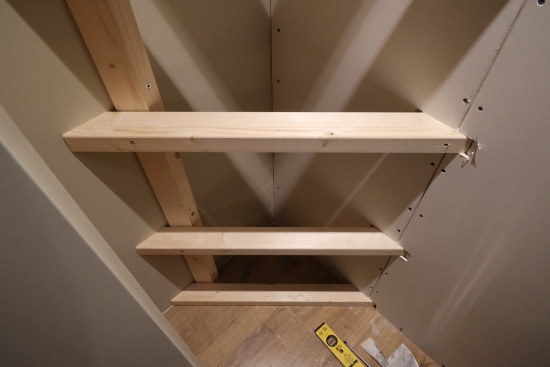
The phase issues had diminished, but they were not gone. Next, I braced the wall using six diagonally placed lumber beams and filled the triangular cavities with Rockwool. The effect of the extra stiffening was already immediately evident after fixing the first diagonal beam in the middle. Now, the sound in the cinema had reached a point where it was still not ideal but certainly acceptable.
Meanwhile, the stiffening of the wall also benefitted my main audio system, although I could still hear some phasing and an uneven thickening in the bass that was not there when the hallway was still open.
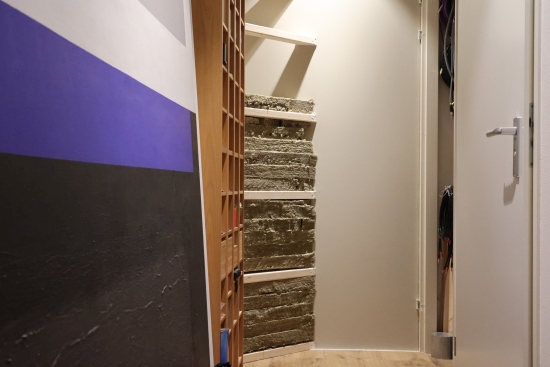
After more experimentation and finding that the door closest to the end of the now-closed hallway also had its own resonance mode, I removed the door so that the sound pressure could “escape” into the adjacent area, which made a big difference.
Since the diagonal beams created a cavity I could not use anyway, I filled it with Rockwool, hoping it would cure some of the colorations heard in the main system. While it did make the bass slightly cleaner, the Rockwool also introduced a dulling of the sound, so I experimented with placing CD racks in front, and, bingo, that did the trick!
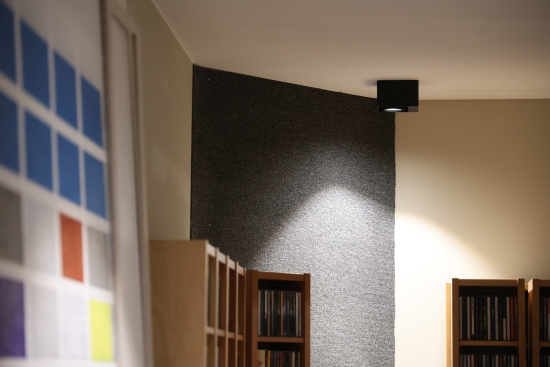
After covering the diagonal corner section with carpet to seal in the fibers and dust and covering the entire corner with CD racks, I also added extra support on the other end of the new wall by reinforcing the two shelves with lumber and then securely screwing them into the side walls, which added some more stiffness to the new wall. Sure enough, the bass in the main system was now nice and clean, even tighter and more solid than before.
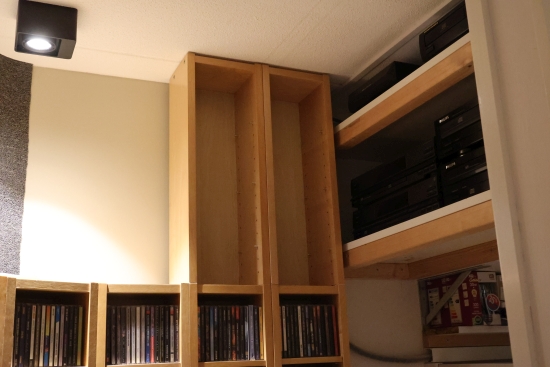
With the required work still vividly in my mind from the main listening room experience, but, annoyingly, having thrown away all the custom-length pieces, I had to score a number of CD racks on the second-hand market once again. In addition, of course, I had to source around 500 extra CDs to fill these racks.
However, this was still not the end of it.
